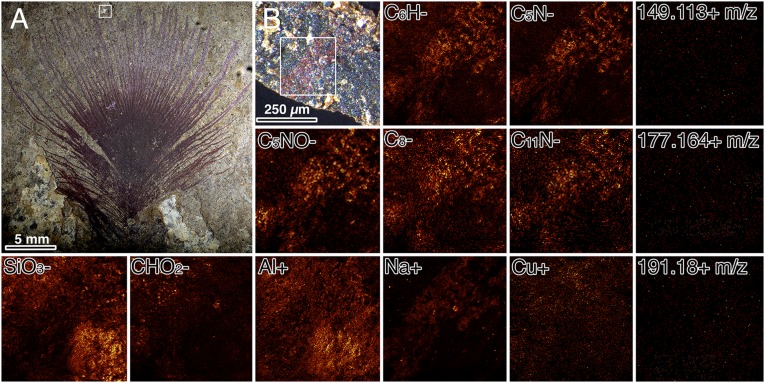Fig. 2.
TOF-SIMS intensity maps of selected positive and negative secondary ions from an Eocene iridescent feather, SMF-ME 3850 from Messel, Germany. (A) Entire feather imaged under normal light. (B) Microscopic image of sample analyzed under TOF-SIMS. TOF-SIMS intensity distributions are labeled by the predicted secondary ion. Note the correlation of secondary ions, previously noted in melanins (7) in the feather barb relative to the matrix, whereas SiO3−, Al+, and CHO2− are more intense in the matrix, which can be attributed to the presence of aluminosilicates, whereas the presence of CHO2− could be due to other organic-rich sources, such as algae or pollen. Sodium (Na+) is localized to the feather, whereas the presence of copper (Cu+) shows no particular correlation to the feather imprint. Bacterial biomarkers for hopanoids were also mapped: m/z = 149.113+, m/z = 177.164+, and m/z = 191.18+. These did not exhibit any particular localization, or any significant quantity in the spectra obtained.

